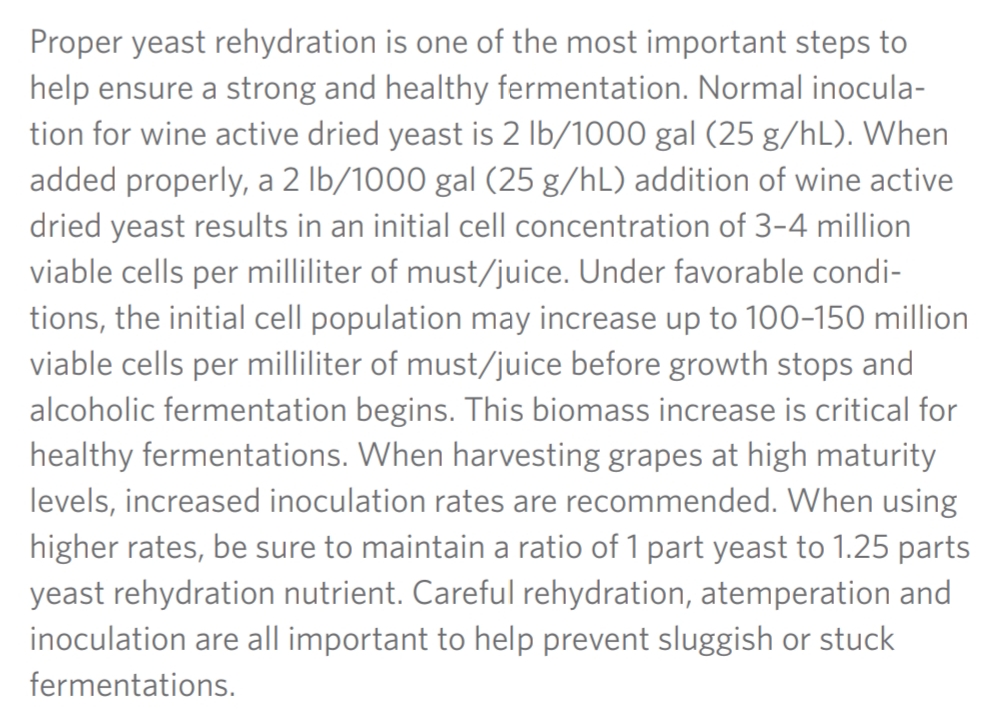NeverDie
Well-Known Member
After dropping in the TILT, it turns out that M31 has an SG of 0.998. So, in the interest of wrapping up this project, I'm declaring M31 done.
I tasted M31, and, despite its slow start, it's one of the better tasting strains. Thank you, Miraculix, for suggesting it.
Therefore, the first pass is now completed, and the updated round-up list is now:
Drinkable as-is:
1. Voss Kveik. 970
2. M05 960. OG 1.105
3. Fresco. 950. O.G. 1.103
4. Wyeast Sweet Mead. 945.
5. M31. 943. OG 1.105. FG 0.998.
6. Fresco. 940. O.G. 1.085
7. KV-1116. 850. OG 1.105
8. S-04. 830
9. D47 800
10. KV-1116. 790. O.G. 1.085
11. Fresco Cyser. 750.
Not good for drinking as-is. Maybe backsweetening or oaking or aging or something would help:
12. CdB 625
13. 71B 600
14. 1388. 400
15. 71B 350. O.G. 1.105
Marginal:
16. EC1118. 300
17. Fleishman's. 200
18. QA23. 150. OG 1.105, FG 0.999
Bad:
19. D21 100
20. Belle Saison 80
21. Premier Cuvee 60
22. DV10. 50
23. Premier Blanc. 0. Down the drain.
After I finish stabilizing the non-bad batches, I'll take their FG's and report back.
I tasted M31, and, despite its slow start, it's one of the better tasting strains. Thank you, Miraculix, for suggesting it.
Therefore, the first pass is now completed, and the updated round-up list is now:
Drinkable as-is:
1. Voss Kveik. 970
2. M05 960. OG 1.105
3. Fresco. 950. O.G. 1.103
4. Wyeast Sweet Mead. 945.
5. M31. 943. OG 1.105. FG 0.998.
6. Fresco. 940. O.G. 1.085
7. KV-1116. 850. OG 1.105
8. S-04. 830
9. D47 800
10. KV-1116. 790. O.G. 1.085
11. Fresco Cyser. 750.
Not good for drinking as-is. Maybe backsweetening or oaking or aging or something would help:
12. CdB 625
13. 71B 600
14. 1388. 400
15. 71B 350. O.G. 1.105
Marginal:
16. EC1118. 300
17. Fleishman's. 200
18. QA23. 150. OG 1.105, FG 0.999
Bad:
19. D21 100
20. Belle Saison 80
21. Premier Cuvee 60
22. DV10. 50
23. Premier Blanc. 0. Down the drain.
After I finish stabilizing the non-bad batches, I'll take their FG's and report back.
Last edited:






































![Craft A Brew - Safale S-04 Dry Yeast - Fermentis - English Ale Dry Yeast - For English and American Ales and Hard Apple Ciders - Ingredients for Home Brewing - Beer Making Supplies - [1 Pack]](https://m.media-amazon.com/images/I/41fVGNh6JfL._SL500_.jpg)




















